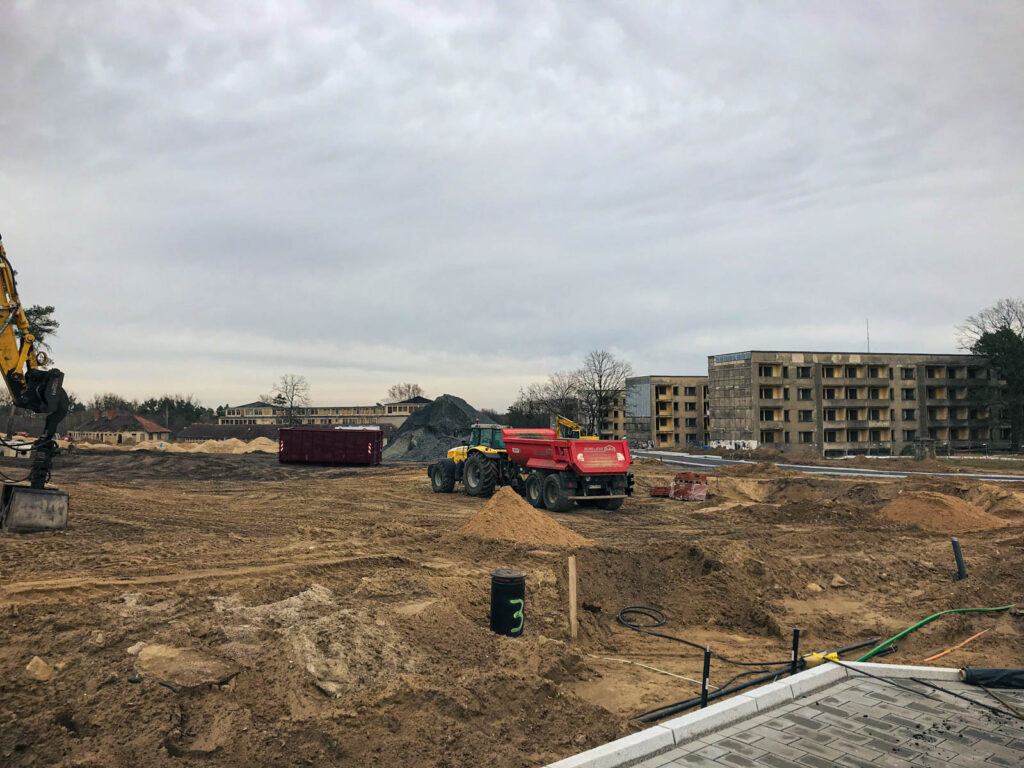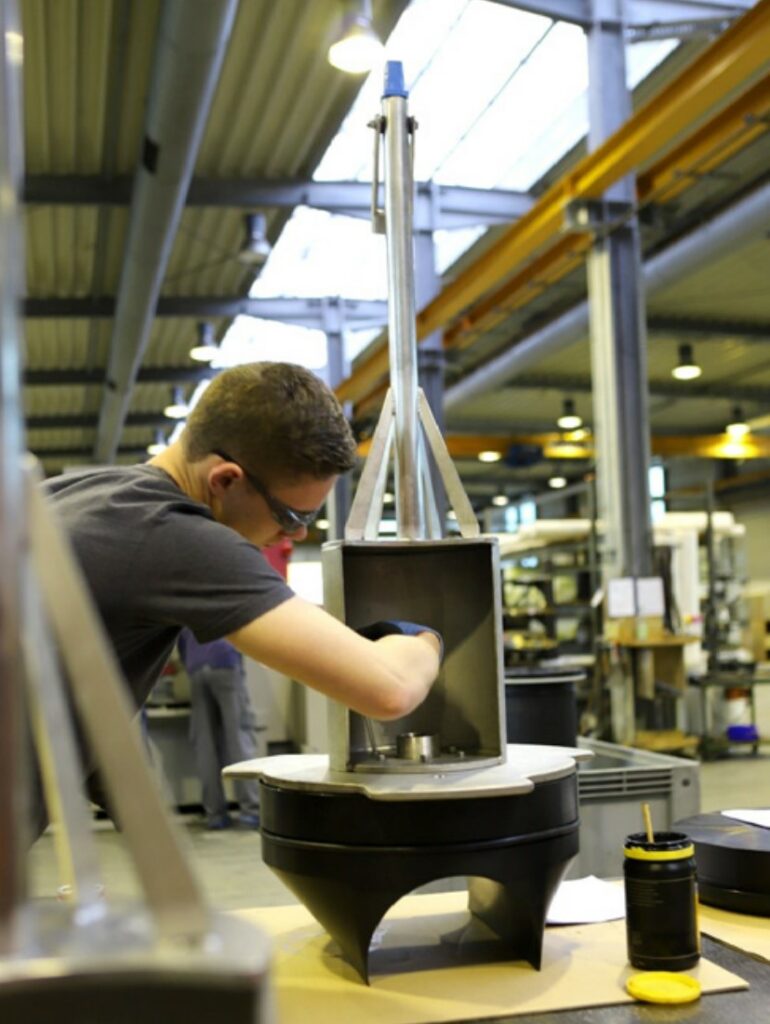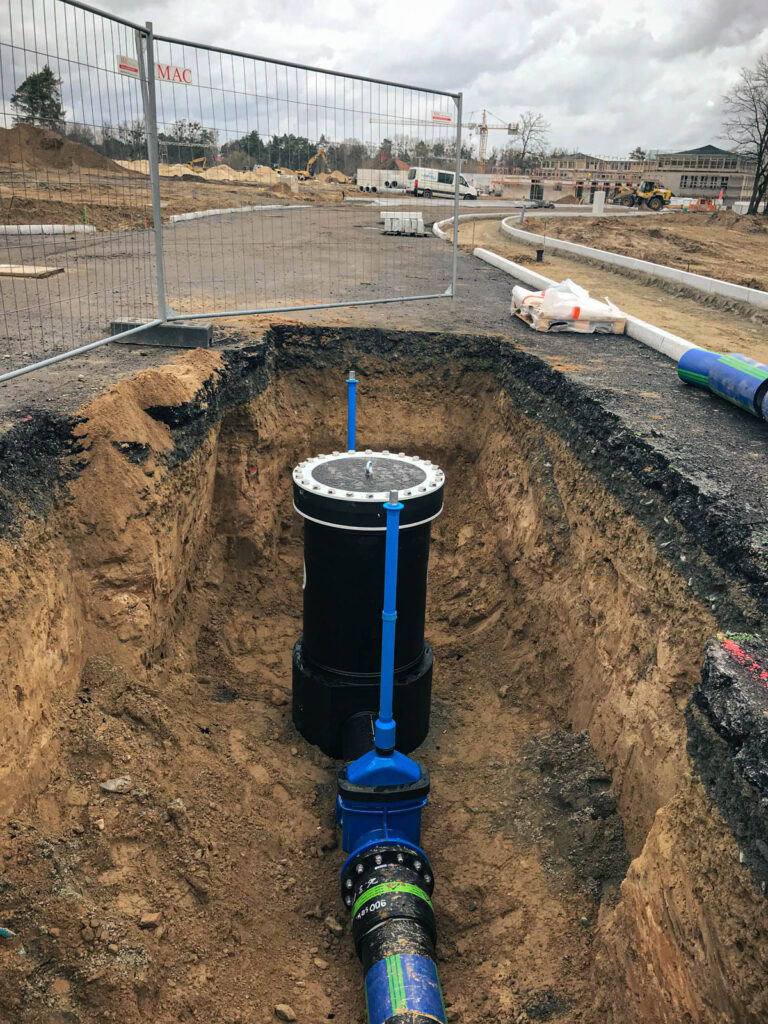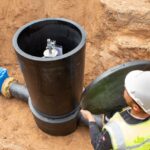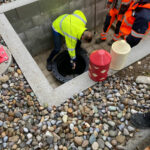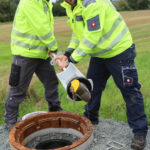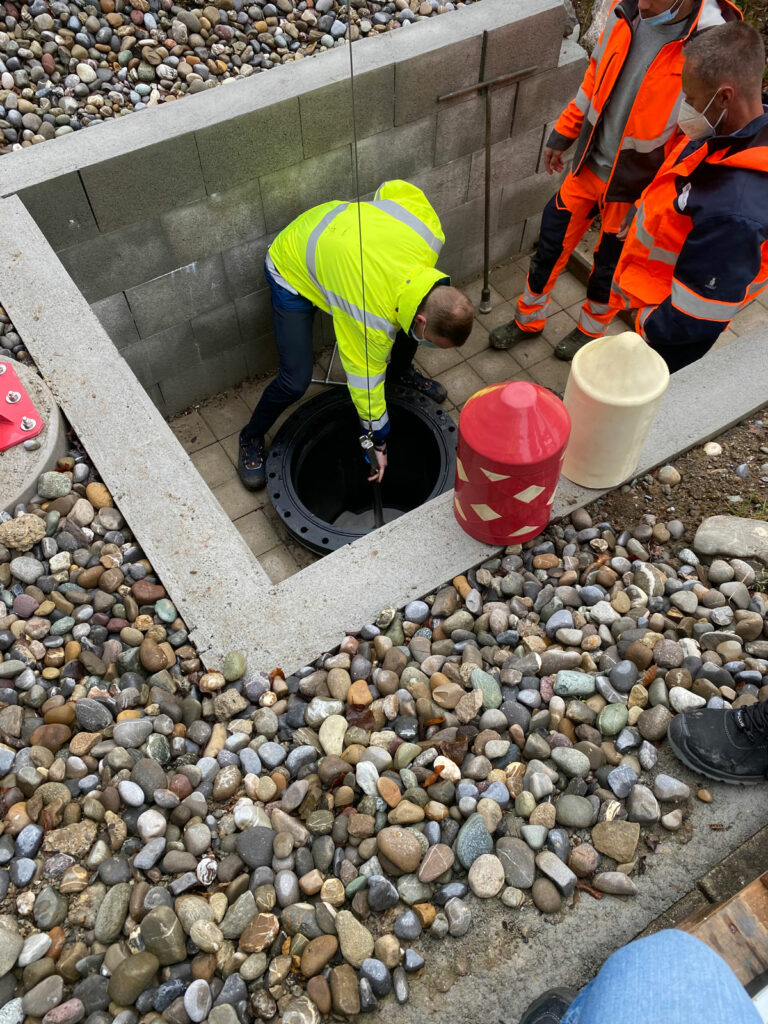The Quick-Pig pig trap requires significantly less coordination and fewer trades compared to a manhole solution. This allows for minimally invasive integration into pipeline systems, even at a later date. And for the operator, the Quick-Pig scores with very safe working from the top of the ground. Read in this article: Why the Quick-Pig Station is now becoming Olympic.
Technical article: Recommissioning of Berlin Waterworks: Pigging in the Olympic Village of 1936
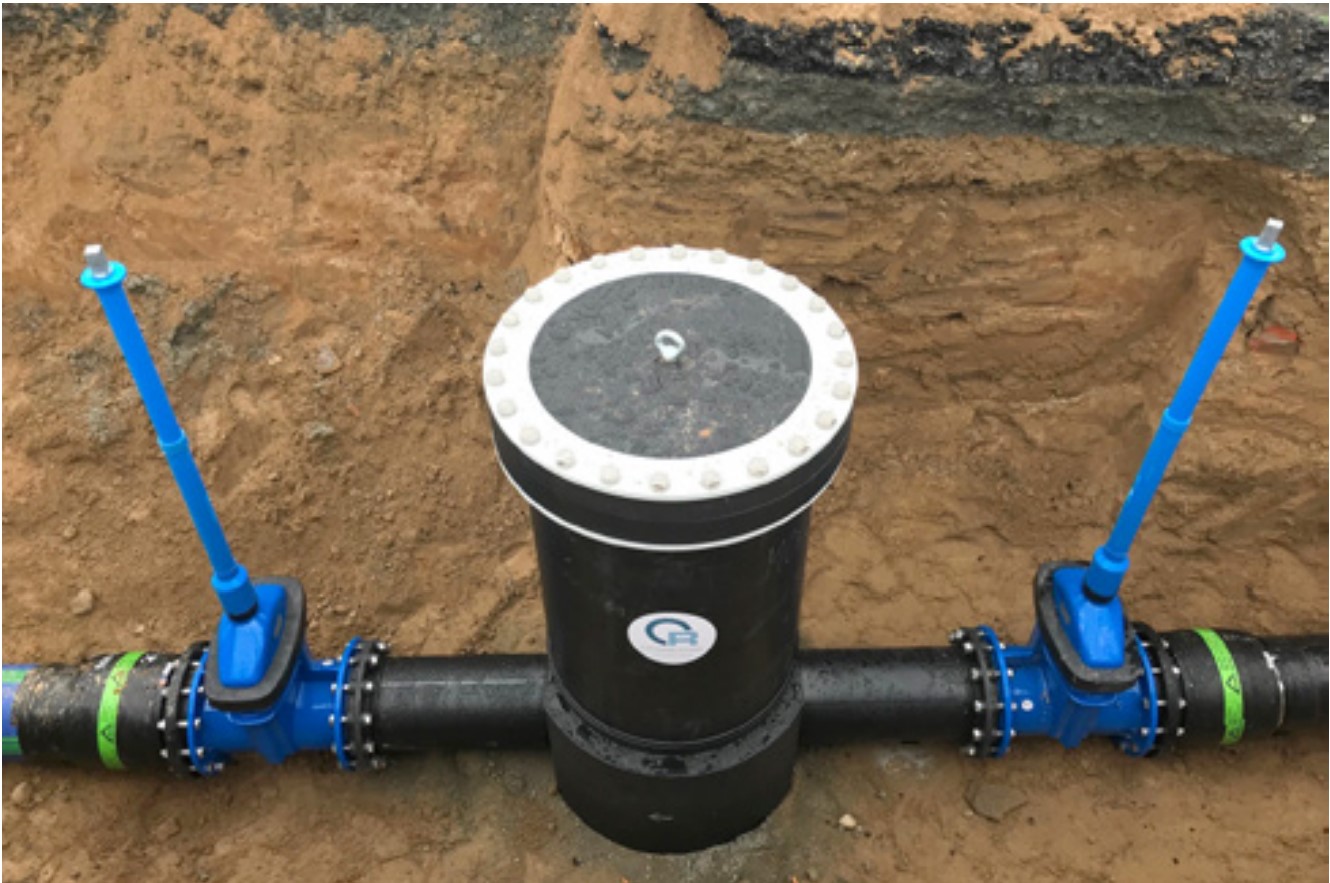
Construction projects around cultural monuments have their very own charm, since one is participating in a building project that is often more noteworthy and has its own past that must be preserved. The 1936 Olympic Village in Berlin is just such a building project. This real estate project is located on a site in Elstal, Brandenburg, barely more than 10 km west of Berlin, which is steeped in history. It may well be seen as one of the premium projects of Germany’s national urban development.
Funded by the Federal Ministry for the Environment, Nature Conservation, Building and Nuclear Safety, new comfortable and modern flats are being built here on the site of the former Olympic Village of the XI Olympiad in a park-like landscape just outside the capital. In addition to new buildings, attention is also being paid to the preservation and renovation of protected buildings. These buildings, which have been severely damaged by the time and use of the Russian armed forces during the almost 50-year division of Germany, are to retain their historical character. The “Dining House of the Nations”, which was centrally located at the time, has a particularly high recognition value with its visually appealing, arched ground plan.
The renewed utilisation of the site also includes the reopening of the historic Radelandberg waterworks, which was built in 1935 and shut down after the withdrawal of Soviet troops in the early 1990s. According to the plan, the waterworks, which is a protected historical monument and has been renovated under strict conditions, should be fully operational again by 2020 – exactly when the first tenants move into the historic site. This will require the drilling of new boreholes, as the existing ones have been shut down.
In future, the groundwater will be drawn from a depth of 80 to 90 m and fed into the plant as raw water for treatment.
In the first construction phase of the Olympic Village project, one of the tasks was to plan the raw water pipes from the boreholes to the waterworks. To ensure that these pressure pipes can be cleaned, pig accesses were planned. The engineering firm PST GmbH from Werder (Havel), which was commissioned with the planning for the Olympic Village project, specialises in the field of project development, construction planning and construction supervision. The responsible planning engineer, Mr. Fiedler, became aware of the advantages and possibilities of a Reinert-Ritz solution for cleaning pipelines at an early stage for the cleaning of pipelines and was able to convince the responsible water and sewage association Havelland from Nauen to plan the pioneering product for the project. Therefore, instead of resorting to costly and expensive manholes, they decided on the most modern and economical solution currently available: the Quick-Pig pigging station from Reinert-Ritz.

In future, pigging will be carried out directly from the top of the ground
The Quick-Pig pigging station makes everything different. No manhole is necessary, no accident-prone climbing down on slippery steps, no problems with possible sewer gases or water in the manhole. All that is a thing of the past with this innovative solution. In future, pigging will be done directly from the top of the ground – and that can now be done in no time at all.
Quick-Pig is a complete unit made of PE 100 and 1.4571 stainless steel that is installed in the pipeline. The basis is a section of homogeneously extruded solid rod made of PE 100. In the dimensions of the pigging station planned for this project, a rod with d 1000 mm is used. This is milled in a complex process to obtain the required shape. The pressure-tight bayonet lock finds its counterpart in the base body manufactured in this way. Dome with dome cover and pipe connections are welded on here.
Since only 1.4571 stainless steel is used in addition to PE 100, the pigging station is particularly corrosion-resistant and durable. The dome extends the station from the pipeline directly to below the top edge of the road. There, it is sufficient to remove the dome cover, which is located under a manhole cover to protect the unit , which protects the unit, to gain access to an insert anchored in the pipeline system by means of a bayonet catch. Through this insert, it is not only possible to directly inspect the condition of the pipeline, but also to insert a pig.
This procedure is completed in minutes and, in addition to the resulting safety aspects of the fully pressure-class-compliant Quick-Pig pigging station, is also a strong economic argument for the operation. The pig can be removed at another Quick-Pig station with the help of a special “basket” that is used for pigging can be removed again. This is also a matter of minutes.
For the first construction phase in the Olympic Village, a total of three Quick-Pig stations were planned and installed. The stations are designed for DN/OD 280 and SDR17 pipe diameters. With their individual dome heights of 1300 mm, 1400 mm and 1700 mm respectively the Quick-Pig pigging stations are imposing.
All pressure-tight bayonet couplings were also equipped with a quick coupling to be able to work with extraneous water when flushing the pipeline. In total, the raw water pipeline in the first construction section between the waterworks and pigging station III is a full 582 m long. In between are station I with a distance of 118 m to the waterworks and station II with a distance of 99 m to station I. The longest distance to be pigged in one piece is the section between station II and III with 365 m. This means, however, that the raw water pipeline is still very long.
However, this does not mean that the raw water pipeline is complete. In construction phase 1, two more quick-pig stations will be added to complete the pipeline. This is a good decision that will make the work of those who have to pig the pipeline in the future much easier and offer a high degree of safety. The stations could be completely installed in one day. This is hard to beat in terms of efficiency and in itself has a great economic advantage. In addition, the time required for pigging will be significantly reduced in the future, which will minimise the total life cycle cost of the system in the long term.

The Quick-Station from Reinert-Ritz is a solution that shows that something complicated can also be made simple to make work easier. Not least, the wastewater technology specialist responsible for cleaning the pipe will be pleased. After all, who wants to descend into a dark, narrow and dirty shaft when it can be done more comfortably, more safely and much more quickly?
Product presentations and professional advice for your planning are available from our Sales team to Quick-Pig – contact directly!
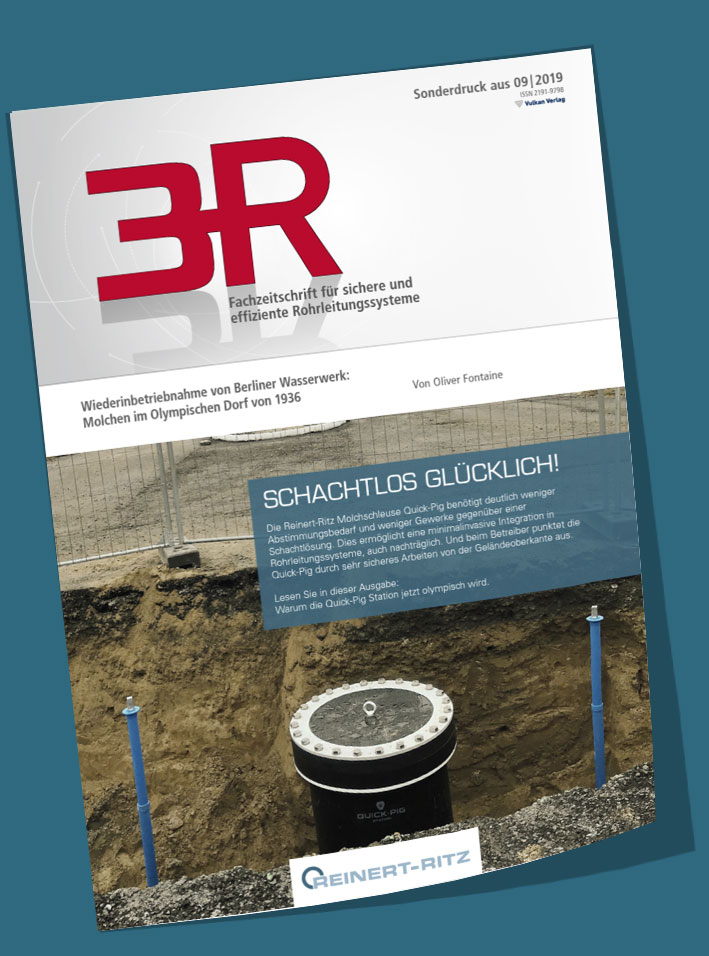
Download the technical article from the 3R as a PDF (German language) here:
Keywords
About the author
UP TO DATE
Subscripe to our newsletter.
Related articles
In Glattfelden, a problem with deposits in the pipes has arisen. Patrick Frei, the municipality’s wastewater treatment supervisor in charge, decided to clean the pressure pipe and relies on the gentle pigging process. The biggest problem with pigging is that the pig has to be inserted into the pipeline, which means that the existing pipeline has to be dismantled and opened. This is a laborious process, which Frei was able to improve significantly with the Quick-Pig pig trap.
The new pigging station enables LINEG’s managers to inspect and clean the installed pipeline from the top of the terrain with a pig. All this is made possible by one of the most modern pigging stations, which allows those responsible for sustainable water management to protect both the environment and the budget at the same time.
Pigging a pipeline must become easier and safer! Without a complex manhole, without time-consuming ventilation of the manhole, directly from the street, made of PE 100 and corrosion-free. With these requirements, Hamburg’s municipal drainage system (now Hamburg Wasser) approached Reinert-Ritz GmbH from Nordhorn. The fittings manufacturer developed a station that enables fast, safe pigging without a manhole and has been used successfully in various projects to date.






